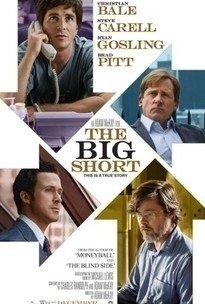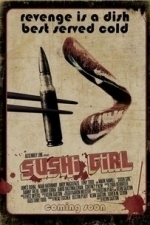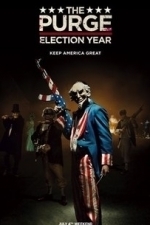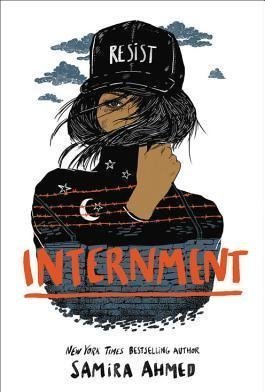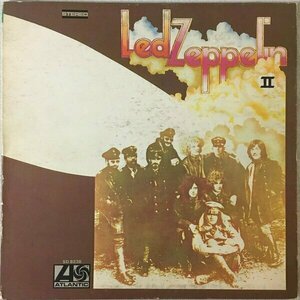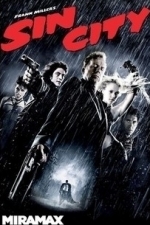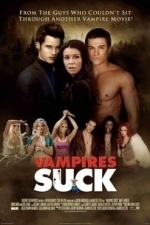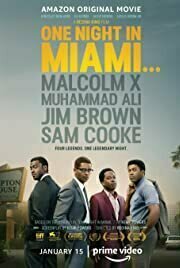Search
Search results
Al Gore recommended The Big Short (2015) in Movies (curated)
Dave Mustaine recommended Angel by Angel in Music (curated)
Tim McGuire (301 KP) rated Sushi Girl (2013) in Movies
Mar 14, 2020
Old Movie Revisited: Sushi Girl. Did you ever want to see Luke Skywalker torture Atreyu from Neverending Story? Me either, but if you did, you can see it here. Not only do we have Luke and Atreyu, we get Candyman, Frank from Donnie Darko, and some extremely brief cameos from Kyle Reese, Machete, Frank Lapidus from Lost, the original Streetfighter himself, and White Power Bill. Of course you have to spend a preternatural amount of time in front of the TV to know some of these people, but hey, youre loss... So this is a Quentin Tarantinoesque type gangster flick that revolves around a botched diamond heist and the torture of Atreyu, after he gets out of a six year stint in the joint. And of course a Sushi Girl who is covered with? Anyone? Anyone? Thats right sushi... Yes, Stephanie Golden, she is naked and has a pretty decent rack :) Mark Hamill, er, Luke, does a pretty awesome job doing a 30's type gangster drawl, and seems to enjoy torturing Atreyu (where the hell has that guy been?) So that being said, and you like Tarantinoesques films, and don't mind a little bloody torture fun, check it out, its a pretty decent ride, like your momma! Filmbufftim on FB
Matthew Krueger (10051 KP) rated The Purge: Election Year (2016) in Movies
Apr 17, 2020
Olympus Has Fallen: White House Down
The Purge: Election Year- is a good sequel to anarchy. Like i said before this one and two are my favorite out of the whole franchise. These two really define this franchise as a whole. Cause it adds more suspense, more thrills, and more purging. Plus Frank Grillo is back which is a plus. I really like his charcter, like i said before he is a anti-hero, he wants to save people, but at the same time he only wants to save himself. He is the only charcter that i actually like and care about because he has a story ark.
The plot: Roan is a U.S. Senator campaigning for the U.S. Presidency, promising executive action to end the annual purge nights. Former police sergeant Leo Barnes is now head of security for Roan. The New Founding Fathers of America's (NFFA) and their candidate, Minister Edwidge Owens, view Roan as a threat; under the pretense of regaining public trust, they revoke immunity for government officials, including her, on Purge night.
Its a really good movie, i like it alot.
The plot: Roan is a U.S. Senator campaigning for the U.S. Presidency, promising executive action to end the annual purge nights. Former police sergeant Leo Barnes is now head of security for Roan. The New Founding Fathers of America's (NFFA) and their candidate, Minister Edwidge Owens, view Roan as a threat; under the pretense of regaining public trust, they revoke immunity for government officials, including her, on Purge night.
Its a really good movie, i like it alot.
Goddess in the Stacks (553 KP) rated Internment in Books
Jul 25, 2019
This book should be required reading in schools. Especially now. It could be paired with Anne Frank. One history, one a possible future. Probable, even. Depending on how you look at it, an actual present. We DO have concentration camps on the border. (Which makes me shudder to write, what in the absolute FUCK.)
*breathes deeply*
Internment is a gut-punch of a book. I had to set it down two pages in and get control of myself, and again around page eleven. I took breaks throughout reading it to do HOUSEWORK, of all things, because I needed the mental and emotional reprieve. And I'm a white woman. I have the privilege of being pretty sure I will never be the target of these kinds of atrocities. Which means I have the responsibility to work against them. I'm also a physically weak, chronic-illness-having, unemployed white woman, (which does have the benefit of letting me keep on eye on my middle-eastern neighbors' houses to watch for ICE showing up - I fully intend to go make myself a damned nuisance if they do) so I can't go storm the camps or march for hours at protests. What I can do is boost books like this.
If you're white, GO READ THIS BOOK. Suck it up and read it. I don't have the same recommendation for my friends of color because they already live with this kind of fear and racism. They don't need it illustrated to them. WE DO.
This book needs content warnings for violence, threats of rape, anxiety-inducing situations, racism, violent death - Samira Ahmed does NOT pull punches. Direct resistance is costly. It takes courage and sacrifice, and she does not shy away from showing that. It would be sugar-coating if she did.
Internment focuses on the idea of America forcing citizens into camps - but we are already forcing non-citizens into camps. The Red Cross visits the camp, not unlike our politicians visiting the immigrant concentration camps on our border now. They have a garden they can work on in the camp - not unlike a pair of photos I saw on Twitter. (see blog for photos.)
Internment is stunning, heartbreaking, and inspiring, and if you're emotionally capable of it, YOU SHOULD READ IT. This is happening, right now, on our southern border. It is infuriating that our politicians have not put a stop to it yet. My own Congressman (I just moved into this area, I haven't had a chance to vote on him yet) just visited the camps, and his Twitter thread on them is SO CAREFUL to use absolutely neutral language when talking about them, and it pisses me off. This is NOT a neutral subject.
Internment did have a few downsides - the Director never gets a name (though the book is told from Layla's viewpoint, and it would not surprise me if he never bothered to GIVE his name to the internees) and he's almost cartoonishly evil. I would have liked to know more about the guard that helped Layla on occasion, but again, told as it was from her viewpoint, it can be excused by saying she simply didn't know more about him. But this IS a Young Adult novel told from a seventeen-year-old's viewpoint. We're only going to get what she knows and feels. So these downsides don't detract from the book for me.
To sum up - I recommend Internment at the highest level. You absolutely must read this book.
You can find all my reviews and more at http://goddessinthestacks.com
*breathes deeply*
Internment is a gut-punch of a book. I had to set it down two pages in and get control of myself, and again around page eleven. I took breaks throughout reading it to do HOUSEWORK, of all things, because I needed the mental and emotional reprieve. And I'm a white woman. I have the privilege of being pretty sure I will never be the target of these kinds of atrocities. Which means I have the responsibility to work against them. I'm also a physically weak, chronic-illness-having, unemployed white woman, (which does have the benefit of letting me keep on eye on my middle-eastern neighbors' houses to watch for ICE showing up - I fully intend to go make myself a damned nuisance if they do) so I can't go storm the camps or march for hours at protests. What I can do is boost books like this.
If you're white, GO READ THIS BOOK. Suck it up and read it. I don't have the same recommendation for my friends of color because they already live with this kind of fear and racism. They don't need it illustrated to them. WE DO.
This book needs content warnings for violence, threats of rape, anxiety-inducing situations, racism, violent death - Samira Ahmed does NOT pull punches. Direct resistance is costly. It takes courage and sacrifice, and she does not shy away from showing that. It would be sugar-coating if she did.
Internment focuses on the idea of America forcing citizens into camps - but we are already forcing non-citizens into camps. The Red Cross visits the camp, not unlike our politicians visiting the immigrant concentration camps on our border now. They have a garden they can work on in the camp - not unlike a pair of photos I saw on Twitter. (see blog for photos.)
Internment is stunning, heartbreaking, and inspiring, and if you're emotionally capable of it, YOU SHOULD READ IT. This is happening, right now, on our southern border. It is infuriating that our politicians have not put a stop to it yet. My own Congressman (I just moved into this area, I haven't had a chance to vote on him yet) just visited the camps, and his Twitter thread on them is SO CAREFUL to use absolutely neutral language when talking about them, and it pisses me off. This is NOT a neutral subject.
Internment did have a few downsides - the Director never gets a name (though the book is told from Layla's viewpoint, and it would not surprise me if he never bothered to GIVE his name to the internees) and he's almost cartoonishly evil. I would have liked to know more about the guard that helped Layla on occasion, but again, told as it was from her viewpoint, it can be excused by saying she simply didn't know more about him. But this IS a Young Adult novel told from a seventeen-year-old's viewpoint. We're only going to get what she knows and feels. So these downsides don't detract from the book for me.
To sum up - I recommend Internment at the highest level. You absolutely must read this book.
You can find all my reviews and more at http://goddessinthestacks.com
Mick Hucknall recommended Led Zeppelin 2 by Led Zeppelin in Music (curated)
Gareth von Kallenbach (980 KP) rated Sin City (2005) in Movies
Aug 14, 2019
In a dazzling blend of muted color, violence, and eroticism Frank Millers graphic novel Sin City has burst upon the screen with a visual style that is as diverse as the star studded cast that drives it.
Set in the fictional Basin City, the film is a series of segments that weave in and around each other to tell various stories and side plots without a clear cut beginning and end as the conclusion of one segment often mirrors portions of the events in another.
While the film does not have a linear plot in the traditional sense, each segment is a snapshot of life in Basin City and how it is viewed by the various people that dwell within. It does not take a genius to see that the city is rife with all manner of unsavory characters from child molesters to cannibals. Basin City is also a place where people are not always the sum of their parts as a violent and disfigured thug named Marv (Mickey Rourke) can show humanity and compassion as he attempts to avenge those who were wronged. It is a place where a person with a dubious past and a new face named Dwight (Clive Owen), is town between the life he left behind and his desire to protect those who are in danger.
The film is chocked full of dialogue that is reminiscent of classic pulp novels and comics of the 40’s and 50’s where characters were often as two dimensional as the pages in which their exploits were chronicled. While this at first seems awkward and hokey it tends to grow on you as it is an accurate reflection of the locales and inhabitants that comprise the city.
While most of the film is shot in a black and white style, there are flashes of color that make a gripping contrast to the usually blank characters. Examples of which are seen in many of the films violent action sequences where blood and other gore are used for artistic effect. In one example, graphic shooting segments are left in a muted black and white allowing us to see the gore in a muted sense. The impact of the scene is not lost but it is rendered in an artistic and unique manner that is amazing to see. While you should be horrified at what you see, you find yourself captivated by the clever color and camera work that is used to render the scene. At other times, the crimson color of blood is used to emphasize a scene and illustrate and illuminate a character.
If this sounds confusing, it is due to the fact that to many “Sin City”, is a film that is a unique looking film, that has a pacing and style all its own, and does not play by the traditional rules for a film. While films such as “Heavy Metal” and “Sky Captain and the World of Tomorrow” have brought graphic novels and visually unique pulp stories to the screen, it is the constant adherence to the source material, and directors Robert Rodriguez, Frank Miller, and Quentin Tarantinos ability to blend their unique styles seamlessly that makes this film interesting.
The action of the film is very well choreographed and despite being very, very graphic in places, it nonetheless entertains and rarely seems gratuitous. The film also has a surprising amount of comedy as there were several moments that caused the audience at my press screening to erupt.
While it does not offer much in the way of plot or acting, the performances are appropriate to the characters and settings .The all-star cast does a great job in conveying the motivations of their characters as the audience is given just what the need to know about a character to make the segments work.
While the film may not appeal to a mass audience due to the unique look and structure of the film, fans of Tarantino and Rodriguez are likely to embrace this film which should likely result in further adventures in Basin City sometime in the near future.
Set in the fictional Basin City, the film is a series of segments that weave in and around each other to tell various stories and side plots without a clear cut beginning and end as the conclusion of one segment often mirrors portions of the events in another.
While the film does not have a linear plot in the traditional sense, each segment is a snapshot of life in Basin City and how it is viewed by the various people that dwell within. It does not take a genius to see that the city is rife with all manner of unsavory characters from child molesters to cannibals. Basin City is also a place where people are not always the sum of their parts as a violent and disfigured thug named Marv (Mickey Rourke) can show humanity and compassion as he attempts to avenge those who were wronged. It is a place where a person with a dubious past and a new face named Dwight (Clive Owen), is town between the life he left behind and his desire to protect those who are in danger.
The film is chocked full of dialogue that is reminiscent of classic pulp novels and comics of the 40’s and 50’s where characters were often as two dimensional as the pages in which their exploits were chronicled. While this at first seems awkward and hokey it tends to grow on you as it is an accurate reflection of the locales and inhabitants that comprise the city.
While most of the film is shot in a black and white style, there are flashes of color that make a gripping contrast to the usually blank characters. Examples of which are seen in many of the films violent action sequences where blood and other gore are used for artistic effect. In one example, graphic shooting segments are left in a muted black and white allowing us to see the gore in a muted sense. The impact of the scene is not lost but it is rendered in an artistic and unique manner that is amazing to see. While you should be horrified at what you see, you find yourself captivated by the clever color and camera work that is used to render the scene. At other times, the crimson color of blood is used to emphasize a scene and illustrate and illuminate a character.
If this sounds confusing, it is due to the fact that to many “Sin City”, is a film that is a unique looking film, that has a pacing and style all its own, and does not play by the traditional rules for a film. While films such as “Heavy Metal” and “Sky Captain and the World of Tomorrow” have brought graphic novels and visually unique pulp stories to the screen, it is the constant adherence to the source material, and directors Robert Rodriguez, Frank Miller, and Quentin Tarantinos ability to blend their unique styles seamlessly that makes this film interesting.
The action of the film is very well choreographed and despite being very, very graphic in places, it nonetheless entertains and rarely seems gratuitous. The film also has a surprising amount of comedy as there were several moments that caused the audience at my press screening to erupt.
While it does not offer much in the way of plot or acting, the performances are appropriate to the characters and settings .The all-star cast does a great job in conveying the motivations of their characters as the audience is given just what the need to know about a character to make the segments work.
While the film may not appeal to a mass audience due to the unique look and structure of the film, fans of Tarantino and Rodriguez are likely to embrace this film which should likely result in further adventures in Basin City sometime in the near future.
Gareth von Kallenbach (980 KP) rated Vampires Suck (2010) in Movies
Aug 8, 2019
Vampires suck – but does the movie? We open on the San Salvatore Festival with the angsty Becca watching her beau, Edward Sullen, disrobe and expose his sparkly secrets- he’s a vampire! Cue the “True Blood- 40oz” toting, Mono-fang vampire to take Edward out….wait, we have to get the rest of the story! What follows is a parody of the first two movies of the Twilight Saga. Most of the characters analogous to the spoof’s target are introduced in the first 30 minutes; few of them are actually seen again throughout the movie.
Becca (newcomer Jenn Proske) is forced to move to Sporks, Washington, with her deadbeat father and town sheriff, Frank Crane (Diedrich Bader of The Drew Carey Show). Frank’s best friend is the rough-and-tumble paraplegic Native American, Bobby. His contribution to the plot is his hunky teenage son, Jacob White (Chris Riggi of Gossip Girl). The town of Sporks seems to have vampires on the brain and its population is only growing smaller.
Our heroine is introduced to Edward Sullen (Matt Lanter of Disaster Movie) and what follows is the “classic” story of girl-meets-vampire, girl-loses-vampire, girl-gets-threatened-by-vampire-nemesis, etc. Writers/Directors Jason Friedberg and Aaron Seltzer use their formulaic approach to spoof movies by making the plot a cliff-notes version of the Stephanie Meyer’s original material, with ample jokes thrown in-in an attempt to beef up their rendition.
In fact, there are so many visual jokes in the movie that it left me wondering what a sight-impaired person might conclude of the movie. “What are all these people laughing at?” I noticed a few of the dialogue driven jokes weren’t even played off by the actors. They seemed to have been missed by everyone, including the editors. Other jokes are pop-culture references that will get stale with time. They’re integrated well, but definitely dated. The movie is redolent with the classic American comedy tradition of slapstick, which occasionally comes off as funny.
The production value left something to be desired as several scenes were obviously one-takes. I counted several instances where Becca’s kiss left Edward’s mouth with a smudge of his own flesh-tone showing through. But hey- at least single takes have continuity, right? The contacts, no doubt purchased in bulk, gave the characters an occasional Marty Feldman goggly-look. The effect is hilarious, although I’m not always sure if it’s intentional.
The cast has its standouts. Jenn Proske’s Becca comes dangerously close (like copyright-violating close) to the performance of Kristen Stewart’s Bella as the fidgety, twitchy, sullen and hormone-y heroine. And Ken Jeong (The Hangover) as Daro, while not appearing on screen much, definitely makes his comedic presence felt.
All in all, “Vampires Suck” didn’t really suck… it kind of chews, like gum. Gum out of the package is fresh, flavorful, but the longer you chew it, the tougher and more stale it becomes. This movie is fresh, funny, and quirky right now, but it won’t stand the test of time like more accomplished parodies.
Becca (newcomer Jenn Proske) is forced to move to Sporks, Washington, with her deadbeat father and town sheriff, Frank Crane (Diedrich Bader of The Drew Carey Show). Frank’s best friend is the rough-and-tumble paraplegic Native American, Bobby. His contribution to the plot is his hunky teenage son, Jacob White (Chris Riggi of Gossip Girl). The town of Sporks seems to have vampires on the brain and its population is only growing smaller.
Our heroine is introduced to Edward Sullen (Matt Lanter of Disaster Movie) and what follows is the “classic” story of girl-meets-vampire, girl-loses-vampire, girl-gets-threatened-by-vampire-nemesis, etc. Writers/Directors Jason Friedberg and Aaron Seltzer use their formulaic approach to spoof movies by making the plot a cliff-notes version of the Stephanie Meyer’s original material, with ample jokes thrown in-in an attempt to beef up their rendition.
In fact, there are so many visual jokes in the movie that it left me wondering what a sight-impaired person might conclude of the movie. “What are all these people laughing at?” I noticed a few of the dialogue driven jokes weren’t even played off by the actors. They seemed to have been missed by everyone, including the editors. Other jokes are pop-culture references that will get stale with time. They’re integrated well, but definitely dated. The movie is redolent with the classic American comedy tradition of slapstick, which occasionally comes off as funny.
The production value left something to be desired as several scenes were obviously one-takes. I counted several instances where Becca’s kiss left Edward’s mouth with a smudge of his own flesh-tone showing through. But hey- at least single takes have continuity, right? The contacts, no doubt purchased in bulk, gave the characters an occasional Marty Feldman goggly-look. The effect is hilarious, although I’m not always sure if it’s intentional.
The cast has its standouts. Jenn Proske’s Becca comes dangerously close (like copyright-violating close) to the performance of Kristen Stewart’s Bella as the fidgety, twitchy, sullen and hormone-y heroine. And Ken Jeong (The Hangover) as Daro, while not appearing on screen much, definitely makes his comedic presence felt.
All in all, “Vampires Suck” didn’t really suck… it kind of chews, like gum. Gum out of the package is fresh, flavorful, but the longer you chew it, the tougher and more stale it becomes. This movie is fresh, funny, and quirky right now, but it won’t stand the test of time like more accomplished parodies.
Lenard (726 KP) rated One Night in Miami (2020) in Movies
Jan 9, 2021
One Night in Miami is from start to finish a frank examination on responsibility and acceptance. On February 25, 1964, four friends who happened to highly visible black men, Malcolm X, Cassius Clay, Sam Cooke, and Jim Brown, met in a hotel room after Cassius surprised the world in winning the heavyweight championship. But, before we get to that night, we are introduced to each man at a crossroads. Malcolm X is breaking away from the Nation of Islam after witnessing the corruption of its leadership. His actions would lead some members to view him as a direct threat. Cassius Clay is a great boxer, but his focus is waning. His brash style is alienating the audience and he has opinions about the way his brothers are being treated in the country. Sam Cooke is recognized as a great voice, but still not respected in the "white" world where success is gauged. He is looking for a way to crossover without betraying his roots. Jim Brown is the greatest football player, but even in his hometown he is still seen as inferior socially. In this dramatized version of the events of that night, each man must come to terms with the path he has chosen and the path forward.
Like another recent film, the path is a choice between making changes within the system, like Sam Cooke and Jim Brown have attempted, or to change the system from the outside, like Malcolm and Clay. Both paths have their advantages, and both are also deadly. Within a year, both Malcolm and Cooke would be dead. The movie based on a play finds ways from each character to learn from the others by pairing them off in various combinations (Malcolm-Cooke, Brown-Clay, Cooke-Clay, Malcolm-Brown, Malcolm-Clay, Cooke-Brown). The main antagonism takes place between Cooke and Malcolm. Cooke sees Malcolm as a militant who is creating sowing seeds of fear in the eyes of "America" and Malcolm sees Cooke as a Stepin Fetchit with a huge amount of talent wasted playing by the rules. Cooke shows Malcolm that he is quietly taking control while Malcolm gives Cooke the spark to sing for civil rights for the less fortunate members of black society. Malcolm also begins to see how his actions have hurt his brothers by grouping all members of one race together similar to the way whites do not distinguish between black individuals. The movie never shies away from shading each hero with flaws.
Malcolm may be paranoid as evidenced by a couple scenes where he sees people on his trail who may or may not be real. Under a lot of pressure to break from his organization, Malcolm sees his staff betraying him to the feds who have been investigating him since he first started speaking. The whole subplot humanizes a man who many view as dangerous to the world. Jim Brown is also seen as a hero to most. He broke records and is about to conquer the film industry. Maybe they are using him, but he is using them to shine a light on the inequality of the races.
Lastly, one scene in the movie is a highlight. It is not in Miami, but in Boston. It shows how one man can turn a riot into a celebration of joy. With the main road blocked, a man of great talent can turn adversity into victory using his wits and his voice.
Like another recent film, the path is a choice between making changes within the system, like Sam Cooke and Jim Brown have attempted, or to change the system from the outside, like Malcolm and Clay. Both paths have their advantages, and both are also deadly. Within a year, both Malcolm and Cooke would be dead. The movie based on a play finds ways from each character to learn from the others by pairing them off in various combinations (Malcolm-Cooke, Brown-Clay, Cooke-Clay, Malcolm-Brown, Malcolm-Clay, Cooke-Brown). The main antagonism takes place between Cooke and Malcolm. Cooke sees Malcolm as a militant who is creating sowing seeds of fear in the eyes of "America" and Malcolm sees Cooke as a Stepin Fetchit with a huge amount of talent wasted playing by the rules. Cooke shows Malcolm that he is quietly taking control while Malcolm gives Cooke the spark to sing for civil rights for the less fortunate members of black society. Malcolm also begins to see how his actions have hurt his brothers by grouping all members of one race together similar to the way whites do not distinguish between black individuals. The movie never shies away from shading each hero with flaws.
Malcolm may be paranoid as evidenced by a couple scenes where he sees people on his trail who may or may not be real. Under a lot of pressure to break from his organization, Malcolm sees his staff betraying him to the feds who have been investigating him since he first started speaking. The whole subplot humanizes a man who many view as dangerous to the world. Jim Brown is also seen as a hero to most. He broke records and is about to conquer the film industry. Maybe they are using him, but he is using them to shine a light on the inequality of the races.
Lastly, one scene in the movie is a highlight. It is not in Miami, but in Boston. It shows how one man can turn a riot into a celebration of joy. With the main road blocked, a man of great talent can turn adversity into victory using his wits and his voice.
